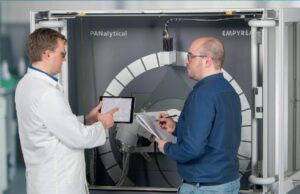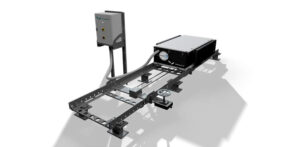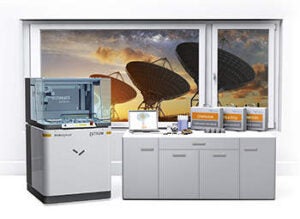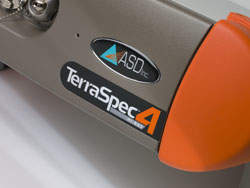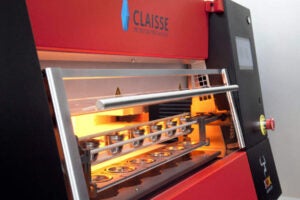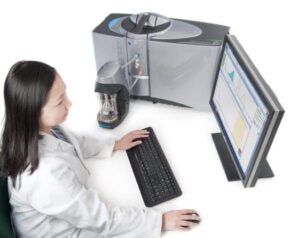Analysis of S and Cl in Waste Oil Using an Ag-Anode X-Ray Tube

This data sheet demonstrates that the Epsilon 4 – a benchtop energy dispersive X-ray fluorescence (EDXRF) spectrometer – is capable of analyzing sulfur and chlorine in waste oil, without the need of helium.
Application background
Waste oil with high chlorine concentrations (several countries: > 0.1wt %) is considered to be hazardous and must be treated differently than other waste oils. A common problem with the analysis of chlorine by energy dispersive XRF is the line overlap with sulfur due to the often high concentrations of sulfur in waste oils. The Epsilon 4 is equipped with a high resolution SDD detector, which improves the separation of S Kα, S Kβ and Cl Kα peaks. This improved separation leads to better quantification of S and Cl down to very low concentration levels. Moreover, use of a Ag-anode X-ray tube overcomes the common problem of tube lines overlapping the S Kα peak. In this way, improved accuracy and lowered limits of detection are achieved, compared to commonly used Rh- or Pd-anode X-ray tubes.
Instrumentation
Measurements were performed using the Epsilon 4 EDXRF spectrometer, equipped with a 10W, 50kV Ag-anode X-ray tube, six filters, a helium purge facility, a high-resolution silicon drift detector, a sample spinner and a ten-position removable sample tray.
Sample preparation
A series of commercially available mineral oil standards manufactured by VHG Labs were used to set up a calibration with varying amounts of S and Cl. The concentration range of the standards was 0 to 0.5wt% for S and 0 to 0.05wt% for Cl. Seven grams of each standard were analyzed in 45mm diameter disposable sample cells using a 3.5µm Mylar supporting film.
Measurement conditions
A single analytical condition was used for the analysis of S and Cl resulting in a total measurement time of 120 seconds per sample. All analyses were performed in air.
Accurate calibration results and detection limits
The S line-overlap correction was automatically applied to the Cl calibration.
The calibration curve for sulfur in the presence of chlorine using the Ag-anode X-ray tube demonstrates an excellent correlation between the certified concentrations and the measured intensities.
Accuracy and Precision
Measurement precision is another important aspect of analysis and is an inherent characteristic of Epsilon 4.
To test the precision of the instrument, one sample containing 0.01wt% S and 0.02wt% Cl was measured ten times consecutively. The standard deviation of the replicate measurements demonstrate excellent precision.


